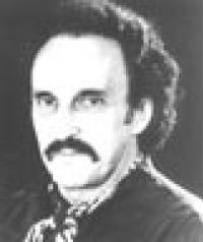The Northridge earthquake has shakened the community and made people wonder "What is Los Angeles?" Leon Whiteson, Contributing Editor and an architectural and urban design critic living in Los Angeles, proposes how self-identifying Angelenos could center themselves post quake.

"Going beyond the pious hopes of punditry, however, we have to ask ourselves if the quake has really shocked us into a genuine sense of community. We need to examine the sinews that actually might bind us one and all, Anglo and Latino, Black and Asian, rich and poor, housed and homeless."
To say that the Northridge quake sent shockwaves through the social fabric of Los Angeles is to state the obvious. Many of our complacencies have been shaken up by the experience of living on the back of a restless subterranean monster shifting in uneasy sleep.
The emotional aftershocks have provoked a tsunami of pious comment about our interdependence as a community. The tragedies of lost lives and damaged homes has seemed, for a while, to underscore our shared destiny in this disaster plagued region. At the same time, the collapse of freeways, the rupture of gas and water supplies, the failure of electric power has shown us on how much we depend upon our common infrastructure and the often-scorned governmental, or quasi-governmental bureaucracies that manage them.
Going beyond the pious hopes of punditry, however, we have to ask ourselves if the quake has really shocked us into a genuine sense of community. We need to examine the sinews that actually might bind us one and all, Anglo and Latino, black and Asian, rich and poor, housed and homeless.
In recent years, the mental condition of Los Angeles in the midst of radical social and economic upheaval has recalled the comment once made by a wit about Vienna in the last days of the Austro-Hungarian Empire: the situation is terrible but not yet serious. In other words, apart from posturing, there seems to be little real grasp here of the realities of our time. We really don't have a clue what, beyond a passing feel-good buzz, the notion of "community" really means to us.
A basic contemporary reality is the global evolution, since World War Two, of the conventional city into a vast regional metropolis the size of many small countries; a mega urban region with both common and conflicting social and economic conditions and ambitions.
In his perceptive book. "The 100 Mile City," the British architect Deyan Sudjic writes that a city such as Los Angeles has, in recent decades, "mutated into a completely new species. Migration and economic development changed it beyond recognition. Technological innovations eliminated traditional industries and scattered new ones in unpredictable places over ever-wider distances."
In this changing and confusing context, few people really know what they mean when they talk of "Los Angeles." Is it the City of L.A.? Is it the county? Or is it the huge metropolitan region designated as a conurbation by the U.S. Census Bureau? Does the term "Angeleno" apply to a resident of Irvine, Long Beach or Thousand Oaks?
Few, if any, of our political or governmental structures have responded coherently to this profound metropolitan evolution. Few, if any, or our official or private planners have grasped the implications of the extraordinary change in the nature of the city and its impact on the sense of identity held by its citizens.
The only real response has been the instinctive, grassroots reaction of local homeowner and neighborhood associations. Struggling to contrive some notion of identity in the regionalized metropolis, these groups have often tried to define themselves negatively by guarding their boundaries and creating what planners call "defensible space." Idealists decry this trend as a kind of willful ghettoization, but it has to be seen as an all too natural response to a confused social context.
To begin to think seriously and tough-mindedly about the notion or community, we have to look at the metropolitan region as it has developed in the recent decades. Rather than preaching gospels about how people should feel and live, we must examine how they actually inhabit and deal with the postmodern urban environment. It’s only on this solid basis that we can even begin to understand how a genuine sense of belonging to a definable urban place might happen.
We might even have to examine whether the reality of what we call Los Angeles might be better served by treating it not as a vast, amorphous agglomeration, but as a patchwork of sub-cities each with its own clear sense of community. We might consider creating a hierarchy of "city councils" even with the City of Los Angeles itself, to replace the current clumsy political structures designed for a simpler time.
Los Angeles is not alone in this need for radical self-analysis. Regional metropolises from Tokyo to London face the same challenge, with or without earthquakes, fires, floods and riots to shake them up. But it would be a small miracle if the Northridge quake really made us begin to think seriously about the nature of our common ground.
- Log in to post comments



